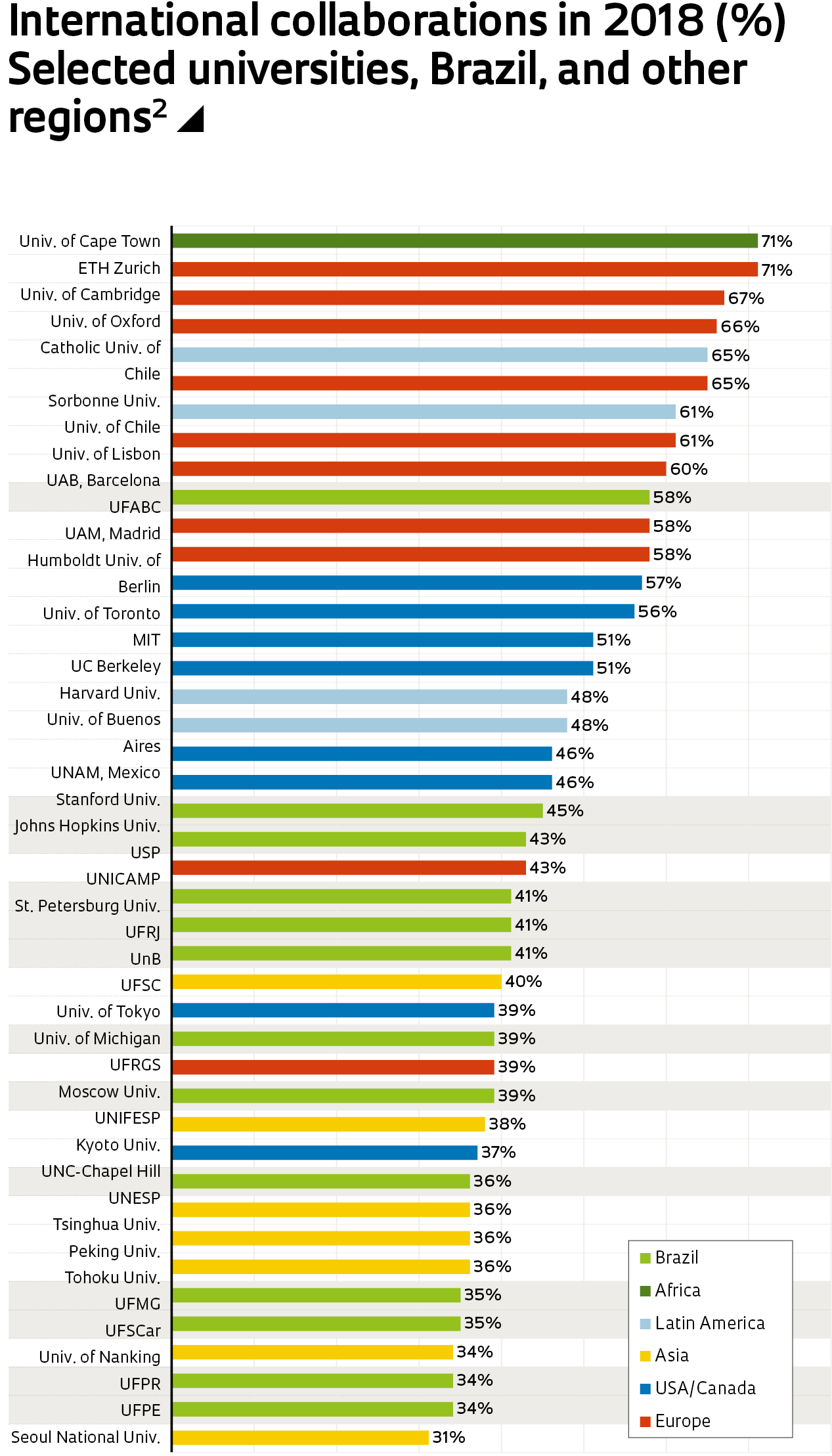- In 2018, 56,396 scientific papers1 were published by authors based in Brazil. Of these, 21,506 (38%) included coauthors from other countries.
- International collaborations in Brazil have increased significantly in the last decade, from 25% of articles in 2008 to 38% in 2018. The same trend is occurring worldwide.
- The rate at most Brazilian universities is between 30% and 45%. The exception is UFABC, where it is 58%. At USP, UNICAMP, UFRJ, UnB, and UFSC, it is above 40%.
- The universities with the highest international collaboration rates worldwide are generally located in European countries, where the index often reaches 55%. Russian universities are an exception in Europe, with a middling number of collaborations.
- Universities in Chile are well placed, as is the University of Cape Town,
South Africa, both with rates above 60%. - Most major universities in Argentina and Mexico are in the middle-high range, with 48% of all articles resulting from international collaborations.
- At universities in the United States and Canada, the rate tends to vary from middle to middle-high, while institutions in China, South Korea, and Japan are among those with the lowest proportions of international collaborations.
